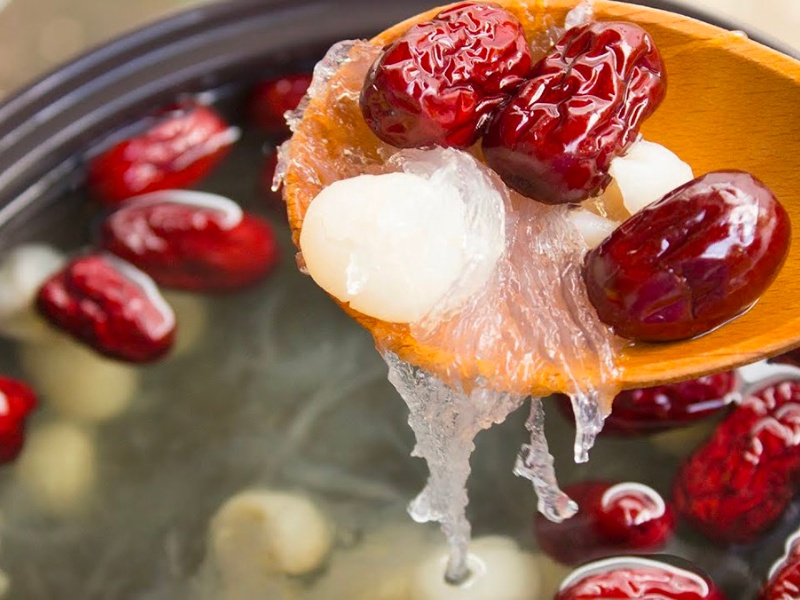News
The bird’s nest exploitation process is of the highest quality
**The Bird’s Nest Exploitation Process: Ensuring the Highest Quality**
Bird’s nest, known as a rare and luxurious delicacy, has been cherished in traditional Asian medicine for centuries due to its numerous health benefits. Made from the hardened saliva of swiftlets, bird’s nests are prized for their high nutritional content, particularly proteins, amino acids, and essential minerals. The process of producing high-quality bird’s nest is labor-intensive, requiring careful management at every stage to ensure purity and safety. This guide explores the intricate bird’s nest exploitation process, focusing on how top-quality bird’s nests are harvested, cleaned, and prepared to preserve their natural benefits.
### **Understanding Bird’s Nest and Swiftlet Habitats**
Bird’s nests are primarily built by swiftlets, small birds native to Southeast Asia. These nests are made entirely from the birds’ saliva, which hardens into a gelatinous texture. Swiftlets build their nests on cave walls or in specially designed birdhouses. The two main types of bird’s nests based on habitat are:
1. **Cave Bird’s Nest**: Harvested from natural coastal caves, usually found in countries like Malaysia, Indonesia, and Thailand. These nests are exposed to natural elements, resulting in a darker color and richer mineral content.
2. **House Bird’s Nest**: Harvested from birdhouses where conditions are controlled for optimal nest-building. These nests are cleaner and whiter, making them popular in the market due to their purity.
Both types of nests require careful harvesting to ensure they are not damaged and to maintain sustainability in swiftlet populations.
### **Step 1: Setting Up and Managing Swiftlet Houses**
The first step in ensuring a high-quality bird’s nest involves creating a conducive environment for swiftlets to thrive. Birdhouse farming has become increasingly popular due to concerns about the sustainability of cave-harvested nests and the need for cleaner products.
– **Optimal Environment**: Birdhouses are designed to mimic the conditions of natural caves. This includes maintaining proper temperature, humidity, and darkness to attract swiftlets. These conditions are carefully monitored to ensure that swiftlets are comfortable and willing to nest.
– **Sustainable Farming Practices**: Farmers focus on sustainable harvesting by allowing swiftlets to complete their breeding cycles before collecting the nests. This helps protect the bird population and ensures that nests are collected without disturbing the swiftlets.
– **Quality Control**: Birdhouse operators routinely inspect the premises to ensure hygiene and prevent contamination by pests or pollutants. This is crucial for maintaining the quality of the nests and ensuring they remain free from harmful substances.
### **Step 2: Harvesting Bird’s Nests**
The harvesting process is delicate and requires experienced workers to ensure the nests are collected without damage:
– **Timing of Harvest**: The nests are typically harvested after the swiftlet chicks have grown and left. This ensures that the birds are not disturbed and can continue to build new nests for future harvests. Harvesting too early can negatively impact the swiftlet population and reduce the quality of the nests.
– **Manual Harvesting**: Skilled workers use ladders or ropes to reach high places in caves or birdhouses. They carefully remove the nests by hand to avoid breaking or damaging them. Unlike mechanized processes, manual harvesting preserves the integrity of the nests, which is crucial for maintaining their market value.
– **Sustainability Measures**: To protect swiftlet populations, farmers typically follow a rotational harvesting schedule, allowing swiftlets ample time to rebuild their nests between harvests. This sustainable approach ensures a continuous supply without overexploiting natural resources.
### **Step 3: Cleaning and Processing Bird’s Nests**
Once harvested, the bird’s nests undergo a meticulous cleaning process to ensure they meet the highest quality standards:
– **Initial Cleaning**: Raw bird’s nests contain impurities like feathers, dirt, and debris. The first step in cleaning is soaking the nests in clean water to soften them. This allows impurities to be gently removed without damaging the nest structure.
– **Hand Cleaning**: The softened nests are then cleaned by hand using fine tweezers. Workers carefully remove any remaining feathers, dirt, and other impurities. This manual cleaning process ensures that the nests retain their natural structure and nutritional content.
– **Avoiding Chemical Treatments**: High-quality bird’s nests are cleaned without the use of bleach or other chemicals, which can alter the natural properties of the nests and reduce their nutritional value. Reputable suppliers ensure their nests are free from artificial additives or preservatives.
– **Grading and Sorting**: After cleaning, the nests are graded based on factors like color, size, shape, and texture. Higher grades are reserved for whole, unbroken nests that are white or lightly colored, while lower grades may include broken pieces or nests with a darker hue.
### **Step 4: Drying and Packaging**
The final stages of processing involve drying and packaging the bird’s nests to preserve their quality:
– **Air Drying**: Once cleaned, the nests are carefully air-dried to remove excess moisture. This step is crucial to prevent mold growth and to extend the shelf life of the product. Proper drying ensures that the nests retain their gelatinous texture when soaked in water for preparation.
– **Quality Control and Testing**: Before packaging, the nests undergo stringent quality control checks. This may include laboratory testing to ensure the absence of contaminants such as heavy metals, pesticides, or harmful bacteria.
– **Packaging**: High-quality bird’s nests are packed in airtight, food-grade containers to protect them from moisture, dust, and other contaminants. Proper packaging ensures that the nests retain their freshness and nutritional value.
### **Ensuring the Highest Quality: What to Look for in Bird’s Nests**
If you’re purchasing bird’s nests, it’s important to recognize the signs of high-quality products:
1. **Color and Appearance**: Premium bird’s nests are typically white or lightly yellowish. Avoid nests that are overly white, as this may indicate bleaching. Red bird’s nests, while rarer, should have a natural reddish hue due to oxidation, not artificial coloring.
2. **Texture and Structure**: High-quality nests should have a firm yet slightly flexible texture when dry. They should not crumble easily. Upon soaking, they should expand into a soft, gelatinous texture without dissolving into mush.
3. **Purity and Cleanliness**: Look for nests that are free from visible impurities. Trusted brands use hand-cleaning methods without chemicals to preserve the nests’ natural benefits.
4. **Sourcing and Certifications**: Always buy from reputable suppliers that provide information on the origin of the nests and adhere to sustainable harvesting practices. Certifications from food safety authorities can ensure the product meets health and quality standards.
### **The Importance of Sustainable Bird’s Nest Harvesting**
Sustainable practices are crucial not only for preserving swiftlet populations but also for maintaining the long-term availability of high-quality bird’s nests. Over-harvesting, especially in caves, can endanger swiftlets and disrupt ecosystems. Responsible birdhouse farming, on the other hand, offers a more sustainable solution by providing swiftlets with a safe environment to nest while ensuring a consistent supply of nests.
### **Conclusion**
The exploitation of bird’s nests is a meticulous process that involves careful planning, sustainable farming, and thorough quality control measures. From providing optimal conditions for swiftlets in birdhouses to the delicate process of harvesting, cleaning, and packaging, each step is essential for producing bird’s nests of the highest quality.
For consumers, choosing high-quality bird’s nests means selecting products that are sustainably sourced, free from chemical treatments, and meticulously cleaned. By supporting responsible producers, you not only enjoy the health benefits of bird’s nests but also contribute to the conservation of swiftlet populations and their natural habitats.
By understanding the intricate exploitation process, you can make informed choices and appreciate the effort that goes into bringing this rare delicacy to your table, ensuring you receive a product that is both nutritious and ethically sourced.

